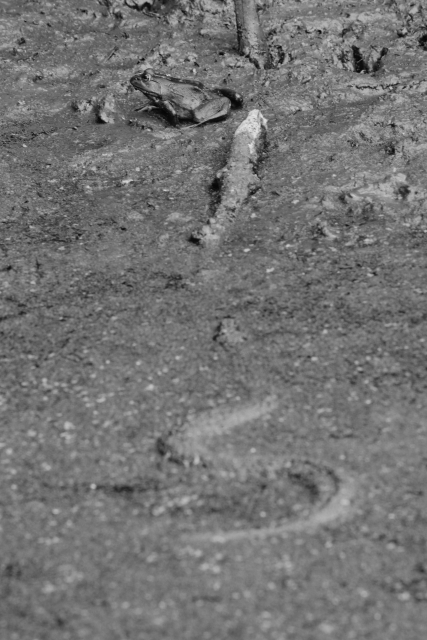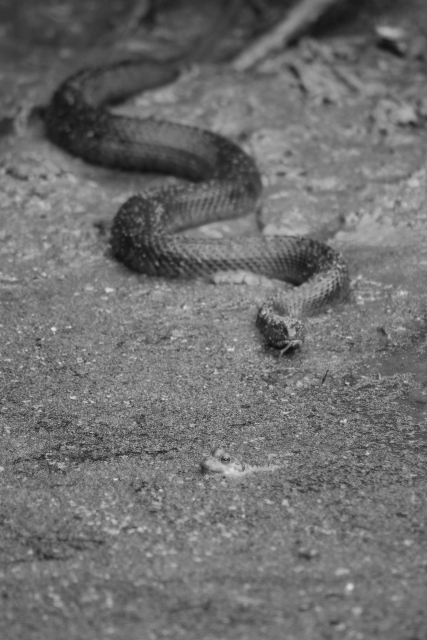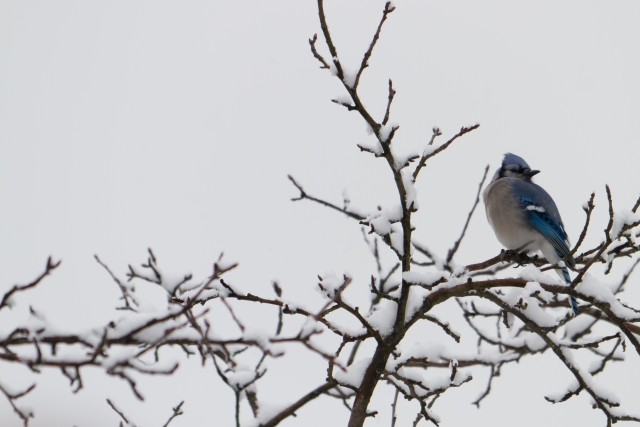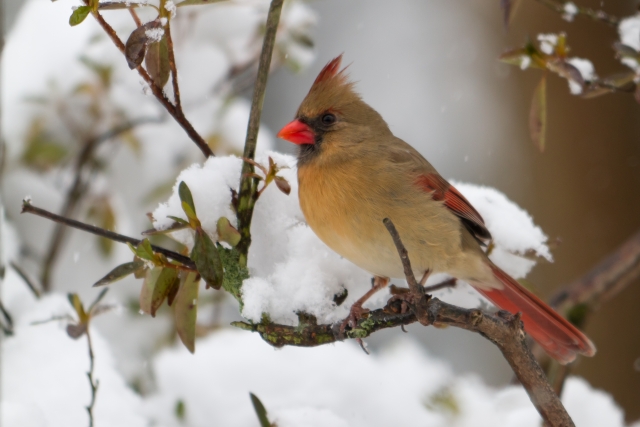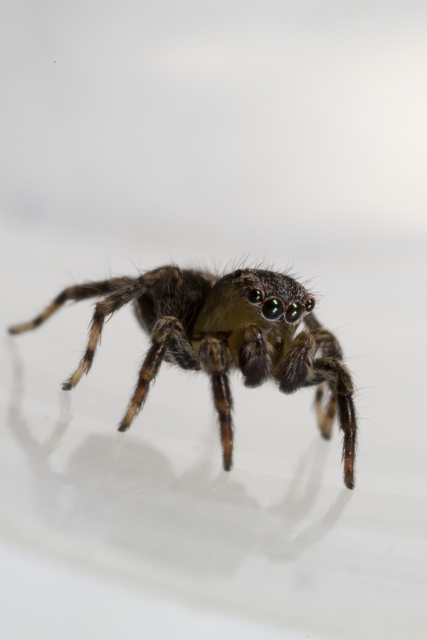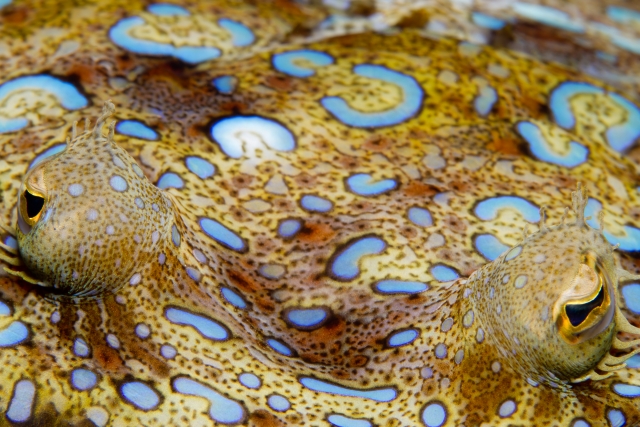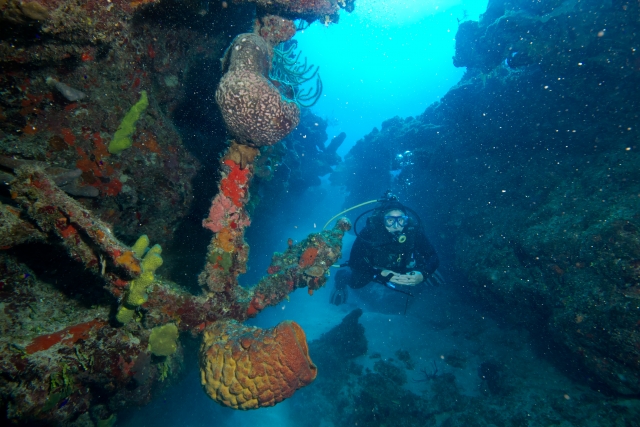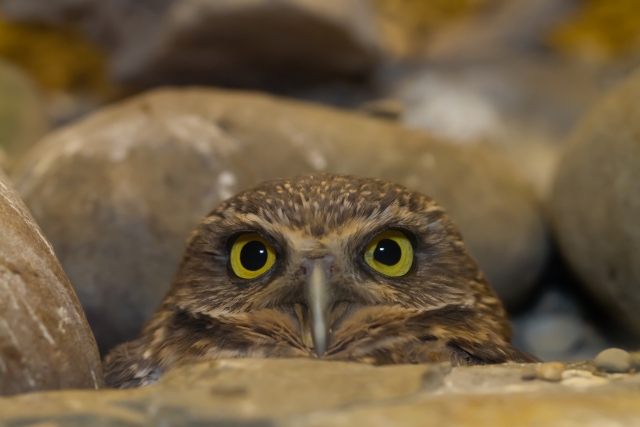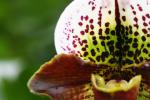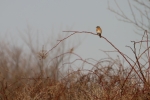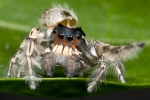The Showdown (revisited)
ktuli — Thu, 01/10/2013 - 19:36
In a week from now, I will be hitting the two year anniversary since I started this blog. If I get the posts done in time, I will also be hitting my 400th post to celebrate the occasion. As such (and partially because I've been a tad lazy with getting the camera out as much as I should), I'm going to dig through the archives and see what gems I might have missed, or how I can give a new look to some photos I've already shared.
With that in mind, I present a couple photos that I shared here in the past (here and here). After seeing someone else share a photo of a snake that they converted to black and white, I decided to give it a shot with some of mine... here are the results...
Technical Data: Canon EOS 7D, Tamron 70-300mm f/4-5.6 Di LD Macro1:2 at 238mm, 1/32 at f/11.3. ISO. No post production. Beechwood Farms, Fox Chapel, PA.
Technical Data: Canon EOS 7D, Tamron 70-300mm f/4-5.6 Di LD Macro1:2 at 238mm, 1/130 at f/5. ISO. No post production. Beechwood Farms, Fox Chapel, PA.
Mouseover the images for the original color version.
- Bill
Turks & Caicos Explorer: Squirrelfish
ktuli — Wed, 01/09/2013 - 21:51
Ok - trying something different tonight... here's a nice little squirrel fish.
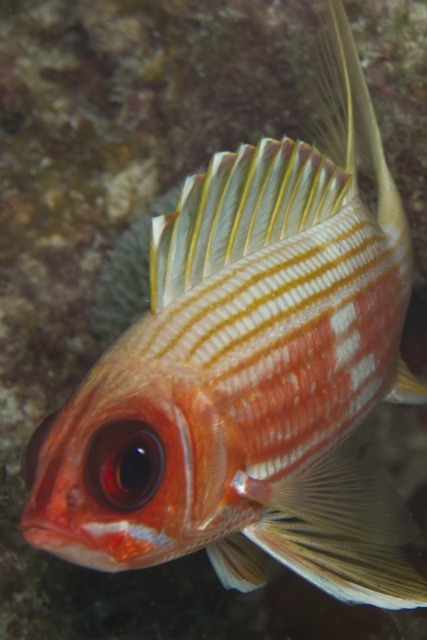
Technical Data: Canon EOS 7D, Canon EF 100mm f/2.8L Macro IS USM, 1/200th sec at f/11. Image Stabilization on. ISO 100. Ikelite Housing and Port with Ikelite 161 Strobe in TTL Mode. Raw conversion in Photoshop CS5.
Hopefully this post looks normal because it was a challenge to write because I posted it from my new tablet...
- Bill
Happy New Year 2013
ktuli — Mon, 12/31/2012 - 12:00
Well, we're about to head into 2013. I plan to try and get some work done on the blog this year to get it upgraded to the latest version of the software, so hopefully this will introduce some change to the look/feel. But in the meantime, here are a couple shots I took while freezing my butt off trying to get the birds to come to the feeders for some nice shots of them in the snow...
Technical Data: Canon EOS 7D, Sigma 150-500mm f/5-6.3 APO DG OS HSM at 500mm, 1/160 sec at f/8. OS Mode Off. ISO 100. RAW conversion and cropped in Adobe Camera Raw.
Technical Data: Canon EOS 7D, Sigma 150-500mm f/5-6.3 APO DG OS HSM at 500mm, 1/320 sec at f/6.3. OS Mode Off. ISO 320. RAW conversion and cropped in Adobe Camera Raw.
Technical Data: Canon EOS 7D, Sigma 150-500mm f/5-6.3 APO DG OS HSM at 500mm, 1/250 sec at f/6.3. OS Mode Off. ISO 320. RAW conversion and cropped in Adobe Camera Raw.
Have a great New Years! And we'll see you in 2013!!!
- Bill
More Jumping Spider Reflections
ktuli — Fri, 12/28/2012 - 12:34
Ok - been a while since we've had any spider photos...
Technical Data: Canon EOS 7D, Canon MP-E 65mm f/2.8 1-5x Macro, 1/250 sec at f/16. Canon Macro Twin Lite MT-24EX in ETTL mode. ISO 100. RAW processing in Adobe Camera Raw.
I can't wait till jumping spiders are around again.
- Bill
Turks and Caicos Explorer: Patterns of the Reef (part 5)
ktuli — Thu, 12/27/2012 - 10:38
Ok - I figure I'll continue this series. This entry is a look at the beautiful pattern on a Peacock Flounder. Normally, you don't get to see this amount of color because they stay on the bottom and mute their colors to camouflage on the sand. This one I found up on the reef, so he had all of his colors as bright as possible to blend in there.
Technical Data: Canon EOS 7D, Canon EF 100mm f/2.8L Macro IS USM, 1/120th sec at f/16. Image Stabilization on. ISO 100. Ikelite Housing and Port with Ikelite 161 Strobe in TTL Mode. Raw conversion in Photoshop CS5.
Thanks for stopping by!
- Bill
Focus Stack: Praying Mantis
ktuli — Mon, 12/17/2012 - 20:20
Yesterday, while walking our dogs, I spotted a dead praying mantis laying in some bushes. Since a live mantis would never sit still for a focus stack process, I decided this was a perfect opportunity to try one, so I picked it up in a plastic bag and carried it home to photograph.
A focus stack is a process of taking multiple photos, each with a slightly different slice of the scene in focus. Once you have all of your slices, you can run it through some software (in my case, I used Zerene Stacker) to align and stack the slices into a super-image with all of the scene in focus. This process is very popular for macro photographers where the depth of field can be very small (even with a small aperture).
This is the first time I've ever tried this, so I don't know if I did things right or not - I pretty much just accepted the defaults and let the software do its thing. Zerene provides two different stacking algorithms - one called DMap and another called PMax - so I tried both to see what results I could get. Here I also provide a single slice for the set to show just how little in focus I was getting for each slice.
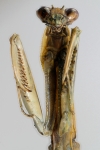 DMap |
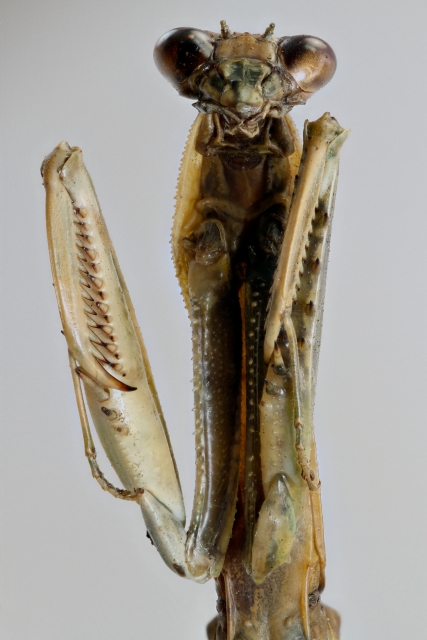 |
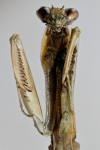 PMax |
|
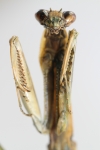 Single Slice |
Technical Data: Canon EOS 7D, Canon EF 100mm f/2.8L Macro IS USM, 1/250 sec at f/5.6. Canon Speedlight 580EX II flash in eTTL mode and wireless control. Image Stabilization off. ISO 640. 22 image stack processed in Zerene Stacker.
As you can see this shot above was done with my 100mm macro lens, but was shot at about 1:1.5 magnification, meaning it is not at lifesize magnification. I had to do this to get the head and forearms in the shot at once. Unfortunately, it wasn't very flexible, so I didn't have much choice on the posing or I would have moved the arm on the right a bit to separate it from the body; however, I was afraid of breaking the arm off, so I didn't try to move it.
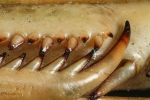 DMap |
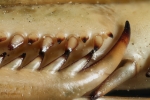 PMax |
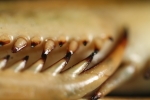 Single Slice |
 |
||
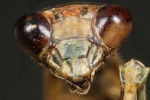 DMap |
 PMax |
 Single Slice |
Technical Data: Canon EOS 7D, Canon MP-E 65mm f/2.8 1-5x Macro, 1/250 sec at f/5.6. Canon Macro Twin Lite MT-24EX in ETTL mode. ISO 100. 17 and 18 image (respectively) stack processed in Zerene Stacker.
As you can see, the DMap method seems to leave some really undesirable artifacts in the final image that look ugly. I'm not sure if that was my fault for not configuring something correctly (or from my old computer not keeping up), or if that method doesn't work well for this kind of shot, or what. I'll have to do more research and see whether I can figure out why that happened.
With the second and third shots, I used the Canon MP-E 65mm macro lens. For the claw, I used a 4x magnification (4:1), and a 2x magnification (2:1) for the face. With the face, I apparently should have taken more shots to get the "neck/shoulders" in focus as well at the bottom of the frame - that was my mistake because I was looking at the top of the mantis' head as I moved the focus forward to get the slices and forgot to look at the rest of the frame.
To take these shots, I had my camera mounted on my macro focusing rail and set the lens in manual focus mode and simply moved the whole rig forward and backwards to get the slices I needed. To be honest, it was a lot of work to setup the shot and make the very small adjustments to get all the necessary slices.
- Bill
Orchid Assortment
ktuli — Wed, 12/12/2012 - 19:06
Ok - we'll towel off again for a bit of non-dive photography. Enjoy the orchids!
 |
||
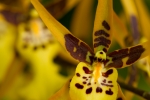 |
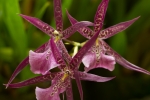 |
 |
Technical Data: Canon EOS 7D, Canon EF 100mm f/2.8L Macro IS USM, 1/40 sec at f/5 (left), 1/30 sec at f/5 (middle), 1/120 sec at f/5.6 (right). Image Stabilization on. ISO 100. Canon Speedlight 580EX II flash in eTTL mode and bounced through an ExpoImaging Rogue Flashbender (right image only). RAW processing in Adobe Camera Raw.
Thanks for stopping by.
- Bill
Turks and Caicos: Spanish Anchor
ktuli — Tue, 12/11/2012 - 18:45
Wide angle photography underwater is much more difficult than on dry land. I learned this lesson the hard way for sure on this trip. I took plenty of shots that I just didn't like at all. This one isn't perfect, but I kept it just the same.
Technical Data: Canon EOS 7D, Sigma 10-20mm f/4-5.6 EX DC HSM AF at 11mm, 1/160 sec at f/11. ISO 640. Ikelite Housing and Port with dual Ikelite DS 161 Strobes in eTTL mode. Raw conversion Adobe Camera Raw.
The first problem that jumps out of me is the strobe placement - I should have had one pointed at Anya so that both she and the anchor were equally illuminated and therefore avoiding the bluish color cast.
Next, ideally we should have waited a bit longer to let the backscatter particles to settle down after the other divers had moved on to get a clearer shot.
However, the proximity to the anchor lets it be a nice large foreground feature and gets plenty of light from the strobes to reproduce the vibrant colors of the sponges and corals.
It is definitely a challenge... one I definitely need more practice at to improve upon.
- Bill
Stay for Just One More
ktuli — Sun, 12/09/2012 - 19:31
This past Saturday, Anya and I made a visit to the National Aviary. Because it was gloomy and overcast outside, it was dim and very difficult shooting conditions inside. After wandering around for a few hours, we were set to go - I packed up my gear and we were about to leave. On our way, we stopped by the burrowing owl exhibit one more time. The first time we looked at it, there was only one owl visible sitting on top of a fake cactus. This time a second owl was peeking its head out of the burrow. Well, since it was close to closing time, there were caterers setting up tables for some event that was happening after regular hours. I had to fight the urge to leave all my gear in my bag and just leave... instead, I pulled everything back out, waited for a break in the caterers' activities and moved in to take a couple more shots.
I'm glad I did - this is hands down the best shot I came back with from the day.
Technical Data: Canon EOS 7D, Canon EF 100mm f/2.8L Macro IS USM, 1/80 sec at f/5. Image Stabilization on. ISO 640. Canon Speedlight 580EX II flash in eTTL mode and bounced through an ExpoImaging Rogue Flashbender. RAW processing and cropped in Adobe Camera Raw.
- Bill
Nature's Fireworks
ktuli — Fri, 12/07/2012 - 08:47
Ok - a quick break from the dive photos to share an abstract taken on a recent trip to Phipps Conservatory.
Technical Data: Canon EOS 7D, Canon EF 100mm f/2.8L Macro IS USM, 1/100 sec at f/8. Image Stabilization on. ISO 100. Canon Speedlight 580EX II flash in eTTL mode and bounced through an ExpoImaging Rogue Flashbender. RAW processing in Adobe Camera Raw.
- Bill

